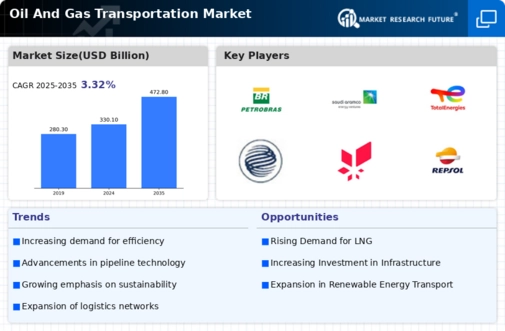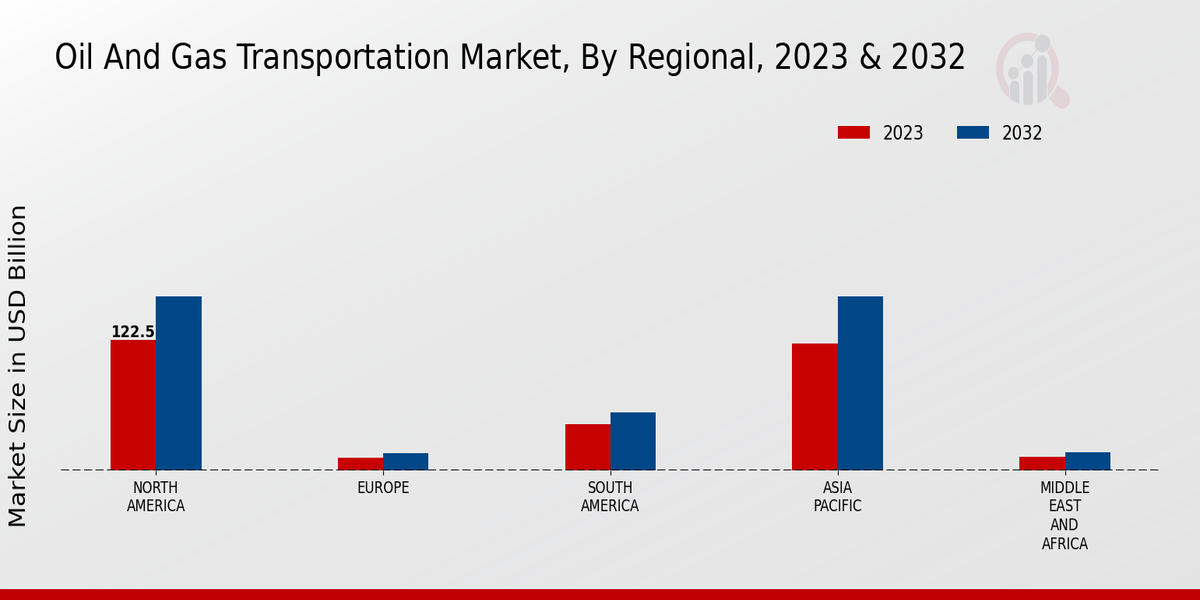Rising Global Energy Demand
The Global Oil And Gas Transportation Market Industry is experiencing a surge in demand due to increasing energy consumption worldwide. As economies grow, particularly in developing regions, the need for reliable energy sources escalates. For instance, the International Energy Agency projects that global energy demand will rise significantly, necessitating enhanced transportation infrastructure. This trend is expected to drive the market value to approximately 330.1 USD Billion in 2024, reflecting the industry's critical role in meeting energy needs. The transportation of oil and gas becomes paramount as countries strive to secure energy supplies, thereby bolstering the market's growth.
Investment in Infrastructure Development
Investment in infrastructure development is a key driver of the Global Oil And Gas Transportation Market Industry. Governments and private entities are increasingly allocating funds to enhance transportation networks, including pipelines, shipping facilities, and storage terminals. This investment is critical for accommodating the growing demand for oil and gas transportation. For instance, major projects in North America and Asia are underway to expand pipeline capacities and improve port facilities. Such developments not only facilitate the efficient movement of resources but also support the projected market growth, with expectations of reaching 472.8 USD Billion by 2035.
Technological Advancements in Transportation
Innovations in transportation technology are reshaping the Global Oil And Gas Transportation Market Industry. The adoption of advanced pipeline monitoring systems, automated logistics, and real-time data analytics enhances efficiency and safety in transporting oil and gas. For example, the implementation of smart pipeline technologies reduces leakages and improves maintenance schedules, leading to cost savings and increased reliability. These advancements not only streamline operations but also address environmental concerns, which are increasingly important to stakeholders. As these technologies continue to evolve, they are likely to contribute to the market's expansion, supporting a projected growth to 472.8 USD Billion by 2035.
Geopolitical Factors and Supply Chain Dynamics
Geopolitical factors play a crucial role in shaping the Global Oil And Gas Transportation Market Industry. Political instability in oil-rich regions can disrupt supply chains, leading to fluctuations in transportation costs and availability. For example, tensions in the Middle East often result in increased shipping rates and insurance costs for oil transport. Conversely, stable political environments can enhance supply chain reliability, encouraging investments in transportation infrastructure. As global energy markets become more interconnected, understanding these geopolitical dynamics is essential for stakeholders aiming to navigate the complexities of oil and gas transportation effectively.
Regulatory Framework and Environmental Policies
The Global Oil And Gas Transportation Market Industry is significantly influenced by regulatory frameworks and environmental policies. Governments worldwide are implementing stricter regulations aimed at reducing carbon emissions and promoting sustainable practices within the energy sector. Compliance with these regulations often necessitates investments in cleaner transportation methods and infrastructure upgrades. For instance, the introduction of carbon pricing mechanisms encourages companies to adopt more efficient transportation solutions. While these regulations may pose challenges, they also create opportunities for innovation and investment in sustainable technologies, potentially driving the market's growth in the coming years.





















Leave a Comment